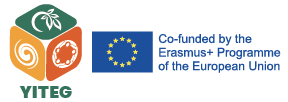Tool Description
The paper “Sustainable Development Impact Indicators for Social Solidarity Economy – State of the art” attempts to review the methodologies, metrics and indicators implemented in the SSE from 1990s until 2019. It presents a selection of assessment tools and indicators that have been applied to SSE and the so-called “blended value enterprises”.
Social and solidarity economy organizations, by their nature, have always tried to achieve social and environmental objectives. Various initiatives assessing their progress towards these objectives, although likely to be considered on the fringe when compared to assessment and reporting initiatives covered in the following sections, have existed for decades.
We have summarized in the download document some of the key approaches to Impact assessment considered in this work, that are particularly relevant for the SSE sector or show the history of impact assessment throughout the last decades in Europe:
- The social accounting, reporting and auditing streams
- the concept of “Utilité sociale” (social usefulness) elaborated in France
- the tool Social Balance elaborated in Spain
- Cooperative Performance Indicators
- The Sustainable Livelihoods framework
- Other methods
- Recommendations from the European Commission’s Expert Group on Social Enterprise (GECES)
We also present a summary of the conclusions of the paper, for further reflection.
In the paper, specific attention is given to the origins and diffusion of these approaches, the role indicators may play in assessing the contribution of SSE to the Sustainable Development Goals (SDGs) and other key issues related to the field.
We provide here a list of the indicators and methods, with relevant information, that are mentioned in the paper and that we consider useful also for SSE actors. They are analyzed better in the summary, and in full detail in the complete pdf paper.
-
- Social accounting, reporting and auditing (SARA) has generated a great deal of literature and practices, rooted in the accounting profession, rather than a specific method or initiative. The common goals are to understand the impact of the organization on multiple stakeholders and to broaden the framework of conventional accounting.
- the concept of “Utilité sociale” (social usefulness) elaborated in France. Although some criteria and indicators relating to economic, environmental, social, political and societal dimensions can be provided as examples, there are no specific sets of indicators involved in the evaluation of utilité sociale. The evaluation process requires these to be tailor-made, based on deliberation with relevant stakeholders.
- the tool Social Balance elaborated in Spain. The basic version of the questionnaire covers around 50 indicators divided in various sections such as financial aspects, democracy, environmental sustainability, social commitment and labor conditions. The complete version covers the same sections but contains about 100 indicators. The main questionnaire is completed each year by the enterprises themselves and additional, shorter, questionnaires are separately filled in by key stakeholders such as workers, customers and volunteers, thus guaranteeing their voice and external perspective is included.
- Cooperative Performance Indicators. COOP INDEX is a tool used to diagnose worker co-operatives for their participatory practices and adherence to co-operative identity. Coops are advised to assess the level of effective adherence to these principles through questionnaires and audits and then report on the results to their members and the general public. Sample indicators for the co-operative principles (Source: Sustainability Solutions Group (2016, 20): see page 3 of the downloadable summary.
- The Sustainable Livelihoods framework. Considering SLF’s ambition is to evaluate the transformative capacity of enterprises, organizations and community-based initiatives to address structural challenges of poverty, social exclusion, gender and/or racial discrimination, it is potentially relevant to assess SSE’s contribution to SDGs, especially, though not only, SDG #1 “No poverty”.
- Recommendations from the European Commission’s Expert Group on Social Enterprise (GECES). They recommend a common process consisting of 5 broad steps (see original source for details): 1. Setting objectives; 2. Analyzing stakeholders; 3. Measuring results; 4. Verifying & valuing impact and 5 Monitoring and reporting.
- Other methods:
- Outcome mapping is a method for tracking behavioural changes in development programs: https://www.outcomemapping.ca/resource/start-here It is an approach to planning, monitoring and evaluation that puts people at the centre, defines outcomes as changes in behaviour, helps measure contribution to complex change processes
- The notion of collective impact involves shared measurement between multiple organizations targeting a common goal. It is considered an important innovation as it invites foundations to collaborate in addressing complex issues that can be better assessed collectively.
Conclusions
Too often, SSE is narrowly associated with social service provision or work insertion, missing its vision and mission to democratize the economy.
Mapping the SSE internationally reveals the numerous initiatives, organizations, enterprises committed to social, environmental and economic transformation, to capacity building of people and communities to achieve these goals. It is committed to democratic governance and participatory decision making. We noted early in this paper that existing metrics do not address issues of ownership or governance. Even what we referred to as resistance or counter-movements to existing social impact measurement methodologies that offer promise in the drive to design better tools with and not for communities, do not explicitly examine these issues. The literature refers to both collectively and privately owned entities, without exploring the impact of ownership. As pressure mounts to comply with the need to demonstrate social impact, the SSE will actively join in the conversation to assure that ownership and democratic governance are at the forefront of its capacity to more effectively meet SDG goals and contribute to building transformative capacity.
Learning from the past and improving existing social impact metrics is a process that must be undertaken collaboratively between stakeholders. This is still an evolving field, but it will unlikely lead to homogenous, standardized measurement tools. Should this be the goal? Indeed, how innovations in social impact measurement will be played out varies in different contexts, but the understanding that the co-design of tools to improve the capacity of the SSE to achieve social impact is a sine qua non in assuring the usefulness of these tools for the SSE itself and for potential investors and governments.
Links and downloads
- Download the full paper in pdf, English
- Summarized version by SSEDs partnership, English
Created by
Gabriel Salathé-Beaulieu, Marie J. Bouchard and Marguerite Mendell UNRISD - United Nations Research Institute for Social Development

